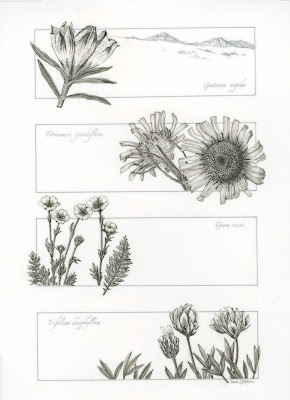(Please, click the images to enlarge)
Rocky Mountains: Plants and Fungi with Altitude
Rocky Mountains: Plants and Fungi with Altitude
Unprecedentedly large wildfires have become common in
western North America, as well as pathogen outbreaks and extreme-drought
mortality. While some plants succumb, others adapt through migration or changes
in phenology. In the end, the landscapes that signal “Rocky Mountain West” to
early-21st century Homo
sapiens are sure to shift as nature evolves to meet these new threats. The
plants and fungi illustrated here represent those common to the Rocky Mountain
region today, produced by the faculty of the School of Botanical
Art & Illustration, Denver Botanic Gardens.
1.
2.
3.
4.
5.
6.
7.
8.
9.
10.























